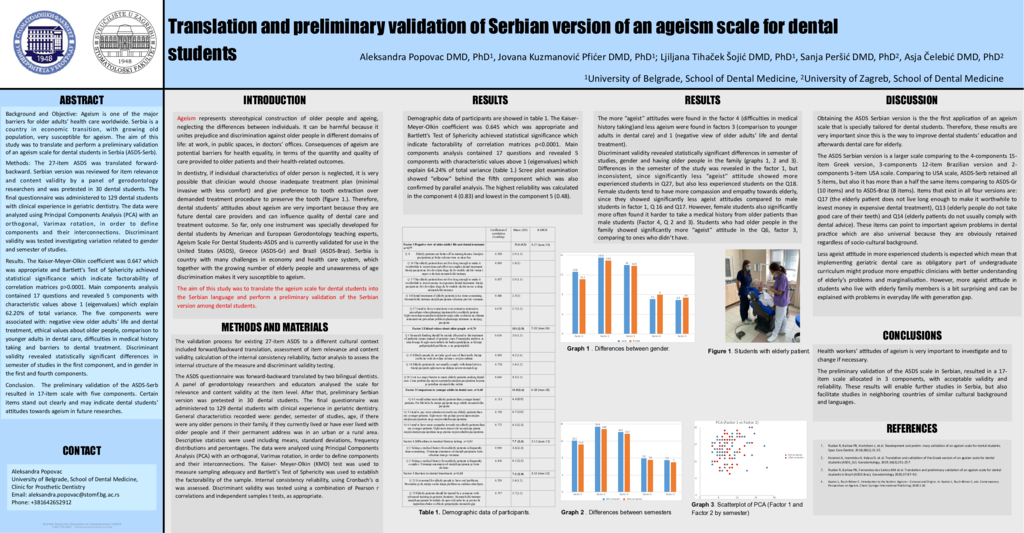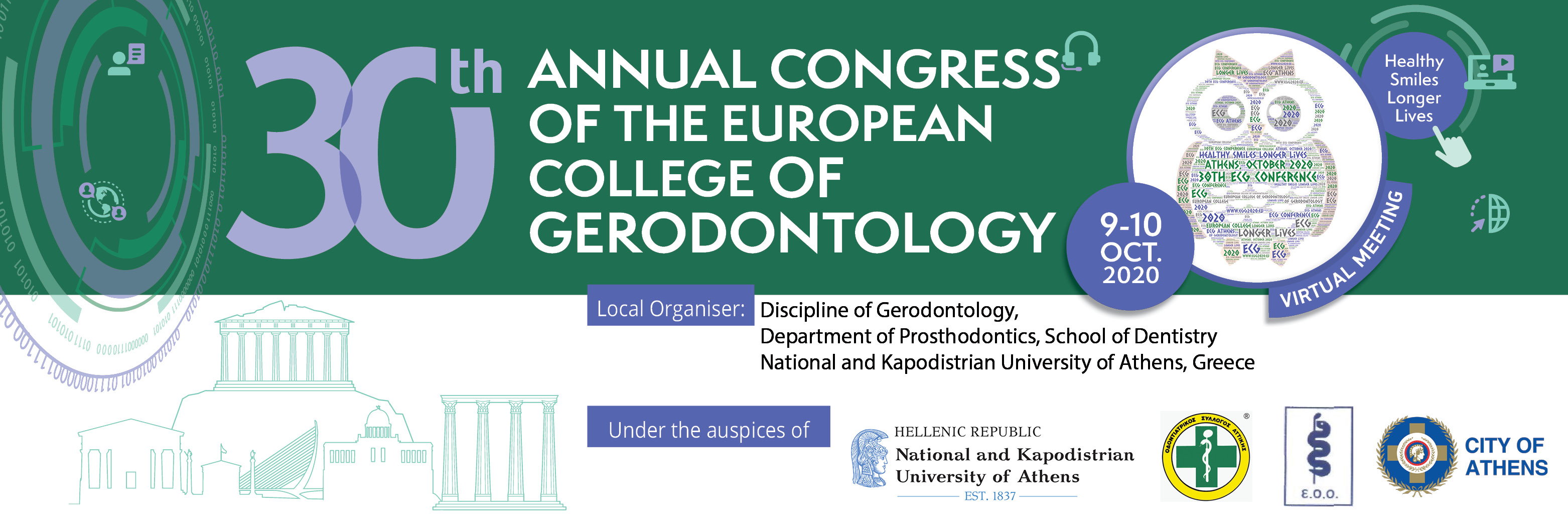Background and Objective: Ageism is one of the major barriers for older adults’ health care worldwide, including dentistry, since fewer dentists choose additional education in geriatric dentistry. Serbia is a country in economic transition, with growing old population, very susceptible for ageism. Therefore, ageism scale specifically adapted for dental students seems very suitable for validation and use. The aim of this study was to translate and perform a preliminary validation of an ageism scale for dental students in Serbia (ASDS-Serb). Methods: The 27-item ASDS was translated forward-backward. Serbian version was reviewed for item relevance and content validity by a panel of gerodontology researchers at the School of Dental Medicine, University of Belgrade and was pretested in 30 dental students. The final questionnaire was administered to 129 dental students with clinical experience in geriatric dentistry (8th, 10th and 12th semester). The data were analyzed using Principal Components Analysis (PCA) with an orthogonal, Varimax rotation, in order to define components and their interconnections. Discriminant validity was tested investigating variation related to gender and semester of studies. Results: The Kaiser-Meyer-Olkin coefficient was 0.647 which was appropriate and Bartlett's Test of Sphericity achieved statistical significance which indicate factorability of correlation matrices p>0.0001. Main components analysis contained 17 questions and revealed 5 components with characteristic values above 1 (eigenvalues) which explain 62.20% of total variance. Scree plot examination showed “elbow” behind the fifth component which was also confirmed by parallel analysis. The five components were associated with: negative view older adults’ life and dental treatment (5 items, 3.512), ethical values about older people (4 items, 2.369), comparison to younger adults in dental care (3 items, 1.918), difficulties in medical history taking (2 items, 1.409) and barriers to dental treatment (3 items, 1.365). Discriminant validity revealed statistically significant differences in semester of studies for 2 items in the first component, and in gender for 4 items in the first and fourth components. Conclusion: The preliminary validation of the ASDS-Serb resulted in 17-item scale with five components. Certain items stand out clearly and may indicate dental students’ attitudes towards ageism in future researches.
- 40 views



